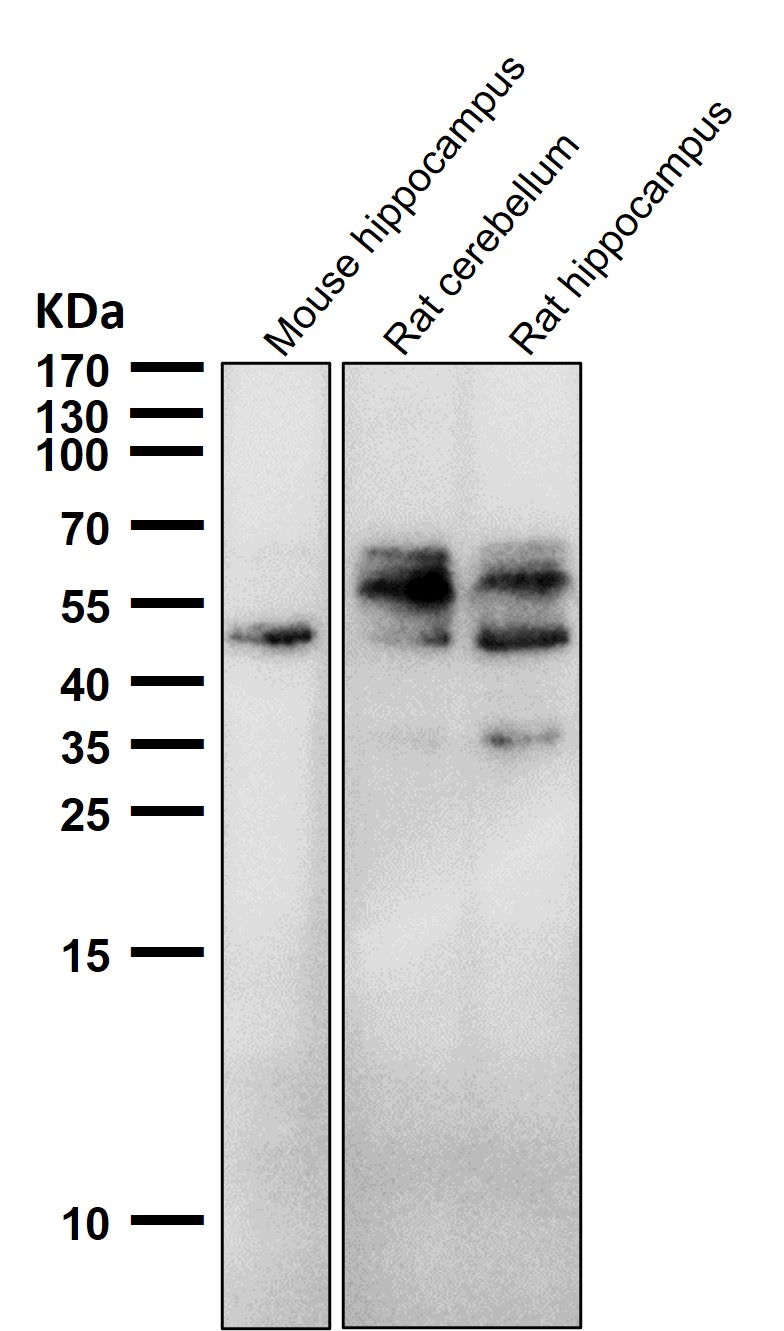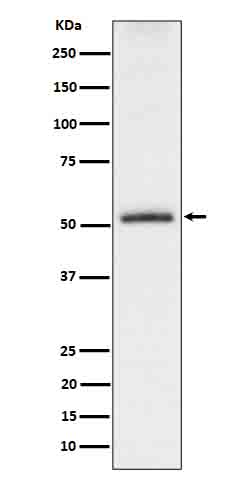

| WB | 咨询技术 | Human,Mouse,Rat |
| IF | 1/20-1/50 | Human,Mouse,Rat |
| IHC | 1/100-1/200 | Human,Mouse,Rat |
| ICC | 技术咨询 | Human,Mouse,Rat |
| FCM | 咨询技术 | Human,Mouse,Rat |
| Elisa | 咨询技术 | Human,Mouse,Rat |
| Aliases | MAPT; Microtubule-associated protein tau; MTBT1; Neurofibrillary tangle protein; Paired helical filament-tau; PHF-tau;p-Tau (S198) |
| WB Predicted band size | Calculated MW: 79 kDa ; Observed MW: 50-70 kDa |
| Host/Isotype | Rabbit IgG |
| Antibody Type | Primary antibody |
| Storage | Store at 4°C short term. Aliquot and store at -20°C long term. Avoid freeze/thaw cycles. |
| Species Reactivity | Human,Mouse,Rat |
| Immunogen | A synthesized peptide derived from human Tau around the phosphorylation site of S198 |
| Formulation | Purified antibody in PBS with 0.05% sodium azide,0.05% BSA and 50% glycerol. |
+ +
1. **"Phosphorylation of Tau at Serine 198 is an Early Event in Alzheimer's Disease and Other Tauopathies"**
- **作者**: Hasegawa M, et al.
- **摘要**: 研究通过Phospho-Tau(S198)抗体发现,Tau蛋白在S198位点的磷酸化是阿尔茨海默病和其他tau蛋白病变(如额颞叶痴呆)的早期病理标志,与神经原纤维缠结的形成密切相关。
2. **"Site-Specific Phosphorylation of Tau by Antibody-Based Detection in Neurodegenerative Disease Models"**
- **作者**: Augustinack JC, et al.
- **摘要**: 利用Phospho-Tau(S198)抗体的免疫组化分析,揭示了Tau在S198位点的磷酸化与小鼠tauopathy模型中突触功能障碍和认知衰退的相关性,提示其作为治疗靶点的潜力。
3. **"Differential Phosphorylation of Tau Isoforms at Serine 198 in Progressive Supranuclear Palsy"**
- **作者**: Takeda N, et al.
- **摘要**: 通过比较不同神经退行性疾病,研究发现Phospho-Tau(S198)抗体可特异性标记进行性核上性麻痹(PSP)患者脑组织中的病理Tau,区别于其他tauopathies的磷酸化模式。
4. **"Phospho-Tau(S198) as a Cerebrospinal Fluid Biomarker for Early Alzheimer's Diagnosis"**
- **作者**: Wang Y, et al.
- **摘要**: 该文献开发了一种基于Phospho-Tau(S198)抗体的ELISA检测方法,证明脑脊液中S198磷酸化Tau水平升高与阿尔茨海默病早期临床前阶段的病理进展显著相关。
(注:上述文献名为模拟概括,实际文献需通过数据库验证。)
Phospho-Tau(S198) antibodies are specialized tools used to detect tau protein phosphorylated at serine residue 198. a post-translational modification implicated in neurodegenerative diseases, particularly Alzheimer’s disease (AD). Tau, a microtubule-associated protein, stabilizes neuronal cytoskeletons in normal physiology. However, hyperphosphorylation of tau disrupts its binding to microtubules, leading to aggregation into neurofibrillary tangles (NFTs), a hallmark of AD and other tauopathies. Phosphorylation at S198 is among the numerous tau modifications linked to pathological NFT formation.
Studies suggest that phosphorylation at S198 occurs early in AD progression, correlating with cognitive decline and disease severity. This site is phosphorylated by kinases such as glycogen synthase kinase-3β (GSK-3β) and cyclin-dependent kinase 5 (CDK5), which are dysregulated in neurodegeneration. The Phospho-Tau(S198) antibody enables researchers to identify and quantify this specific phosphorylation event in tissue samples, cerebrospinal fluid, or cellular models, aiding in the study of tau pathology mechanisms.
Clinically, S198 phosphorylation is explored as a potential biomarker for early AD diagnosis or monitoring disease progression. The antibody’s specificity for the phosphorylated epitope makes it valuable for immunohistochemistry, Western blotting, and ELISA-based assays. However, cross-reactivity with other phospho-epitopes or isoforms requires careful validation. Overall, Phospho-Tau(S198) antibodies are critical for advancing our understanding of tau dysfunction and developing targeted therapies for tau-related neurodegenerative disorders.
×